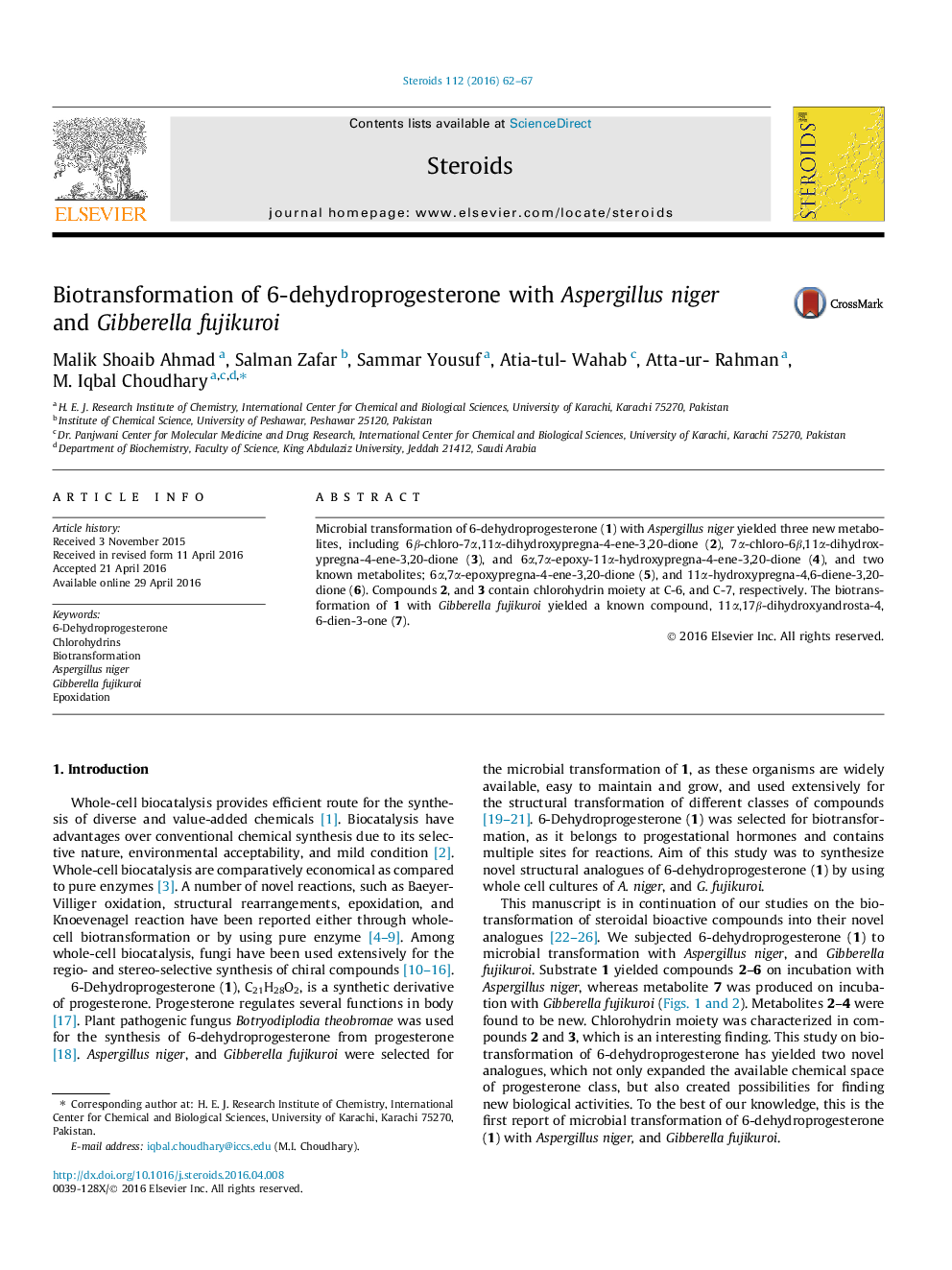| Article ID | Journal | Published Year | Pages | File Type |
|---|---|---|---|---|
| 2027591 | Steroids | 2016 | 6 Pages |
•6-Dehydroprogesterone (1) was structurally transformed with Aspergillus niger and Gibberella fujikuroi.•Microbial transformation of 1 with A. niger resulted in three new metabolites.•Microbial transformation of 1 with G. fujikuroi yielded a known metabolite.•C-6 and C-7 of steroidal skeleton were the main sites of epoxidation, hydroxyl, and Cl substitution.
Microbial transformation of 6-dehydroprogesterone (1) with Aspergillus niger yielded three new metabolites, including 6β-chloro-7α,11α-dihydroxypregna-4-ene-3,20-dione (2), 7α-chloro-6β,11α-dihydroxypregna-4-ene-3,20-dione (3), and 6α,7α-epoxy-11α-hydroxypregna-4-ene-3,20-dione (4), and two known metabolites; 6α,7α-epoxypregna-4-ene-3,20-dione (5), and 11α-hydroxypregna-4,6-diene-3,20-dione (6). Compounds 2, and 3 contain chlorohydrin moiety at C-6, and C-7, respectively. The biotransformation of 1 with Gibberella fujikuroi yielded a known compound, 11α,17β-dihydroxyandrosta-4,6-dien-3-one (7).
Graphical abstractFigure optionsDownload full-size imageDownload as PowerPoint slide
